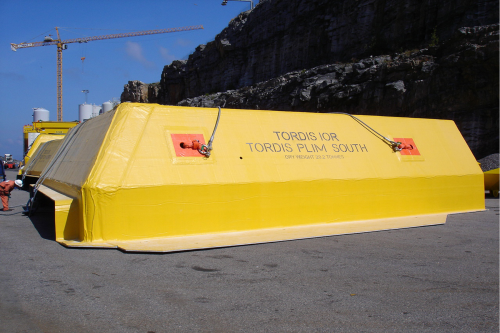
Scott Bader’s Crystic 703PA is a pre-accelerated, dicyclopentadiene (DCPD) polyester resin with low viscosity and controlled exotherm characteristics. It is approved by the Lloyds Register of Shipping for marine applications, and is suitable for vacuum injection and similar production techniques in large structures.
“Their [Scott Bader’s] special Crystic 703PA DCPD infusion resin has given us big advantages for the fast production of very thick laminates up to 60 mm, allowing us controlled geltime and low exotherm combined with very quick cure and productivity,” says Jon Inge Brattekaas, General Manager at Sörkomp.
The GRP covers for the subsea structures have been designed to provide impact protection to pipeline connection points from surface dropped objects such as drill pipes. Pipeline expansion zones, usually an area of Z-shaped pipe work, are also protected. The covers provide overall protection to seabed installations against commercial trawling operations.
They are around 24 mm thick – enough to withstand dropped-object impact forces of 50 kN. In heavier structures up to 30 tonnes, thicker laminate of up to 80 mm are incorporated as lifting points. Compared to similar structures of steel, GRP has the advantage of having only a third of the weight and being corrosion resistant at the same time as keeping impact strength.
The mouldings are given an outer surface yellow gel-coat finish after the vacuum injection process to ensure maximum visibility for seabed conditions, before a final top gelcoat finish is applied. The coloured gel-coat is Scott Bader’s Crystic 0209 SMK which is isophtalic with low styrene content and good self levelling properties. The final topcast is the Crystic X 103 KH, a pre-accelerated orthophtalic gelcoat with a tack-free surface. Both are thixotropic polyester gelcoats.
More than 80 large covers for the production of undersea oil and gas pipelines equipment have recently been manufactured. Total GRP gross weight is 430 tonnes, and some covers weigh up to 10 tonnes each. The majority of the products have been supplied to Acergy Norway AS for the Tyrihans project.






